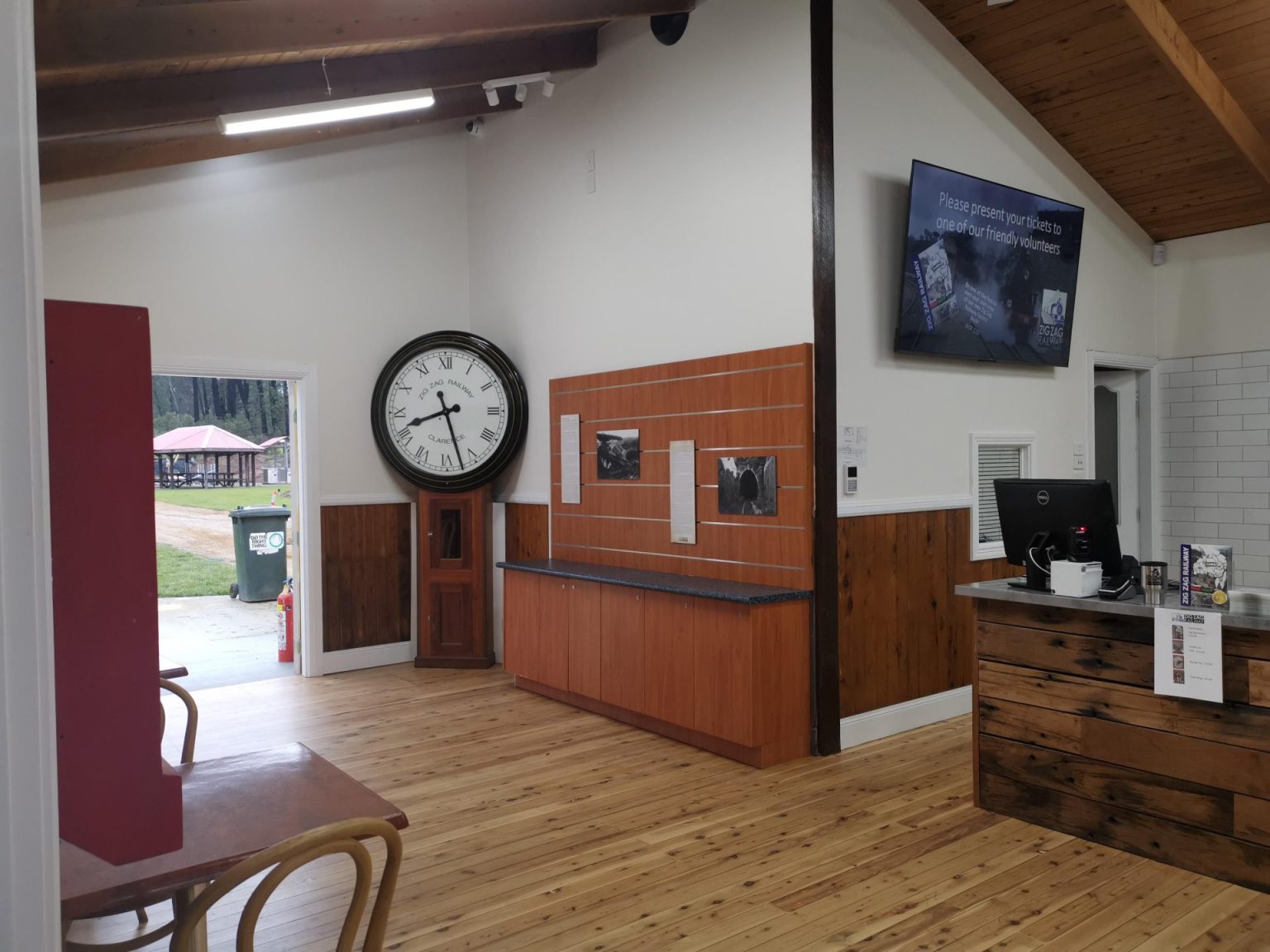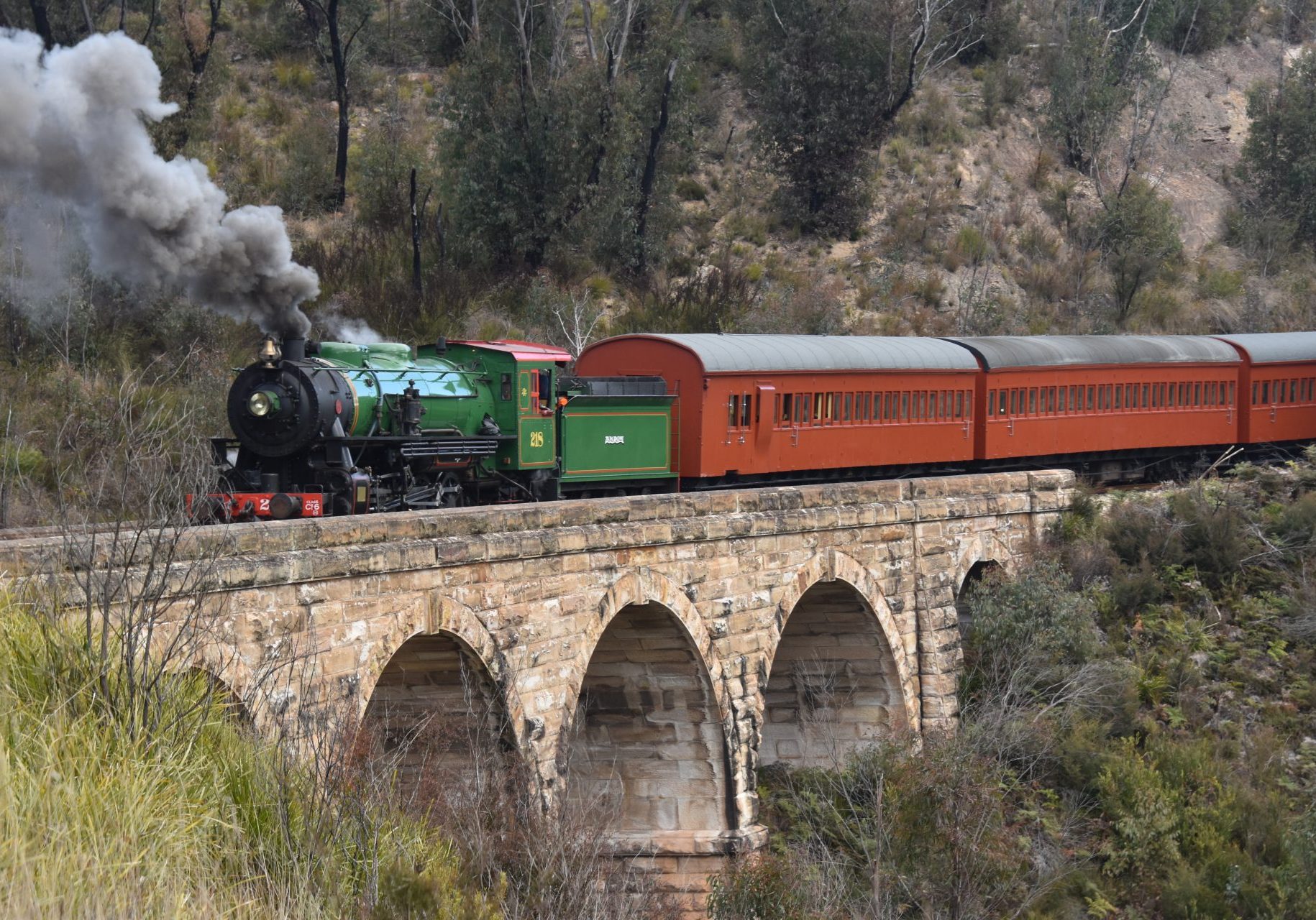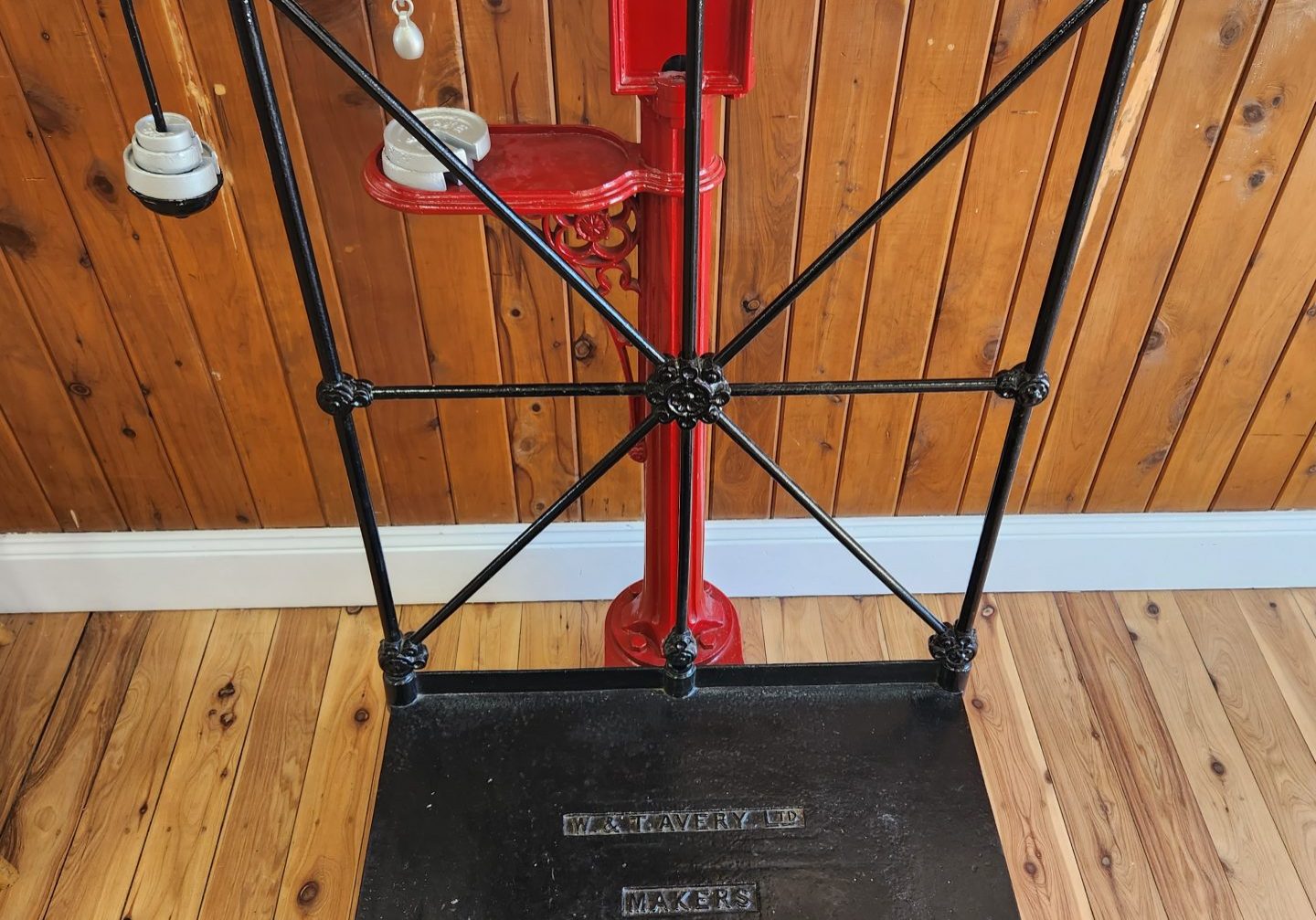Clarence Station Clock
Inside the Clarence Station building sits the original Cootamundra Station clock. Next time you visit the shop view the clock and actually observe the minute hand move. Ask our shop crew to relate the history of the clock and its significance to Zig Zag Railway. Our member Mattie Milroy has kindly provided the account below of the recent restoration of the clock.
A Timely Resurrection – The Cootamundra Clock
Mattie Milroy
A small part of the rehabilitation of the Clarence precinct that I recently found myself involved with has been the restoration of the “Large Platform Clock” ex-Cootamundra that graces the main station building.
In mid-October 2022, Dan Zolfel and myself met with Keith Potter at Clarence. Keith is a railway clock historian and clock maker from Albury who specialises in the NSWGR Large Platform Clocks, and has previously worked with Sydney Trains, Powerhouse Museum and several private custodians to tender the care that these ancient timepieces demand. I had met Keith previously, when he requested to view our clock as part of a research project he has been undertaking, to locate the known surviving clocks of this type, and to record as much historical and technical information surrounding them as possible.
During Keith’s October visit, the clock was dismantled in situ, with the movement, including the weight and pendulum, being taken by Keith back to his workshop in Albury. Although the machinery appeared to want a lot of love, Keith was confident he would have it all up to scratch by end of November.
With the clock now in pieces, I was asked to take the dial and hands into protective custody, rather than risk them being thrown about the station floor while the movement was away. Carrying them out to my ute, I quietly muttered something about these parts needing a bit of a birthday also, to which Dan responded with two words: “Artistic Liberty.”
So with the dial and hands now fully occupying my dining table, it was time to bring it all back to life. The hands were a simple enough strip-back and repaint. For dial on the other hand, with my artistic liberty granted, I set about reworking the artwork to a format more in keeping with the original style it would have once sported but still maintaining it long-established identity as the Zig Zag station clock.
Photographs of the fully-restored sister clock now at Central (originally from Newtown Station- yes, Keith has worked on this one, too) was lifted from the internet, which provided a guideline to style and proportions. Some hours were the spent generating artwork on CAD, which was then produced on my ever-faithful vinyl cutter ready for application to the stripped back and repainted dial. At the same time, I developed a set of jigs and templates to find 12 O’clock position and exact centre of the hand-arbour hole, so I could accurately plot the radii and angles for the new artwork to be applied, photo 3. Over a handful of nights, the new artwork was applied, culminating in a final layer of clearcoat to finish.
All the while I was kept busy with this work, the empty case, still at Clarence, was not forgotten. I made a few visits and gave the case a very thorough clean-up, and lick of fresh paint on the bezel, with two thin gold bands as the finishing touch.
Meanwhile, Keith was busy at his end, fully overhauling the movement, including fabricating a new pendulum suspension and doing serious corrective surgery to other parts as needed, to account for wear and tear endured over the clock’s previous 150 years of service, photos 5 and 6. A new winding crank was also provided, which is a vast improvement upon the mantle clock style key we were previously using.
Keith recorded all works in a document which has been forwarded to ZZR and includes historical notes and instructions for ongoing use and care. By mid-November, the movement was happily ticking away on Keith’s test stand and ready for installation, however, its return to Clarence was slightly delayed, owing to the flooding we have all come to know and love making it prohibitive for Keith to leave the Riverina.
Come December 10 2022, the same day as our AGM, Keith was able to return to Clarence with the restored beating heart of our clock. Over a few hours, some final modifications were made to the case to ensure everything came back together in the most optimal alignment. The movement was then finally secured on the seat board, photo 7, the dial and hands replaced, photo 8, and for the first time in many years, our clock’s gentle beat once again was heard in the station.
Keith then used his “Timetrax” clock testing machine, to detect the clock’s beat and establish it was running at an even 3600 beats-per-hour. From what I understand, this device “senses” the impulses on the arbours with each tick as the pendulum swings, and compares the clock’s timing against its internal oscillator. Adjustments can then be made to the clock’s pendulum and beat adjuster until the target beat can be established. All being satisfactory, at seven minutes past two that afternoon, the new winding crank was formally handed over to ZZR, photo 11, and the clock is now ready once again to be the functional centrepiece of the Clarence Station interior.
At 14.07hrs, Keith formally hands the winding crank over to Zig Zag.
– Text by M Milroy
New South Railways Large Platform Clock History.
The following notes were provided by Keith Potter.
Note: This is an ongoing research project intended to gather as much information from as many sources as possible so that a small booklet can be made available to no cost to all current known custodians of these clocks. Along the way it is hoped to gather together as many parts that can be found to be kept in one location to allow these clocks to continue to operate.
The background history of these clocks is difficult to trace as there are no markings on them to indicate who made them. Some large Victorian railway clocks that have the same movement have the name “Christian Lange London” on the dial.
The clock movement and dial probably came from England (to be confirmed), the cases were almost certainly made in New South Wales in two different workshops (again to be confirmed). Each dial was matched to the movement although due to the position of the dial post and winding arbour not all dials with match other movements.
How many there were is a matter of conjecture, some say 60 plus, others say no more than 30. Documentary evidence suggests originally 48 later reduced to 44. This information is in the form of loose hand written sheets comes from a gentleman who had access to railway archives prior to their relocation to State Archives in early 2000. A lot of this information was not retained as it was not considered to be of core value.
Surviving documents indicate that there were 44 clocks and includes the station name and asset number, although there is photographic evidence of at least 3 others on stations not on that list.
Of the clocks on that list I have been able to locate 25 complete clocks and parts of another 6. Only 10 of these clocks are what I would call original as the remainder have been assembled from parts collected from various sources after they were withdrawn from service in 1974-1975.
The clock numbering system is confusing as there are two different numbers attached to each clock.
The first number, what I call the clock number, assigned to the clock when the clocks were assembled, this number was stencilled on the inside of the case below the seat board in Arabic numerals (I have also seen the same number on the underside of the top of the case). This same number was sometimes also stamped into the cast iron dial surround and the bezel in Roman numerals, in other cases the number was shown by centre pop marks.
The movements originally had the clock number stencilled on the front plate in gold leaf, at some later time the number was stamped along the lower edges of both plates in either Arabic or Roman numeral centre pop marks. Some movements also had the station name stamped on top of one of the plates, in some case the station name was stamped into the pendulum road as well as the pendulum bob.
The second number, the asset number, was in some cases attached to the backboard below the pendulum bob with the same style of brass label used on all other railway clocks. It would appear that in the early days the clock repair section tried to keep all the parts in the original case. It seems likely that in the later stages of the clocks service life the contractors did not share the same ideas thus we see some clocks with different numbers on the case, movement, dial, pendulum and pendulum bob.
More about the Cootamundra/Clarence clock.
The following notes are thanks to both Keith Potter’s information and a follow-up phone conversation I had with the late Alan Gabbatt after Keith’s original viewing of the clock a few years prior.
Large Platform Clock, asset number 10 was installed on Cootamundra Platform circa 1870, and remained in service there for approximately a full century. The remains of its hanging bracket are still visible within the brickwork of Cootamundra station to this day.
Following its withdrawal, the clock was acquired by ZZR in June 1979 and placed in storage until a suitable home for it was made at Clarence over twenty years later.
Unfortunately, the original trunk portion of the case didn’t survive the years in storage, and so when the clock was installed at Clarence in the early 2000s, a new case had to be built. This new case is not fully representative of the style case the clock once possessed, which would have hung entirely from the station wall, a daunting prospect considering the assembled clock’s near 200kg heft. The dial, at 3 feet diameter, overhangs my dining table at home by a considerable amount!




